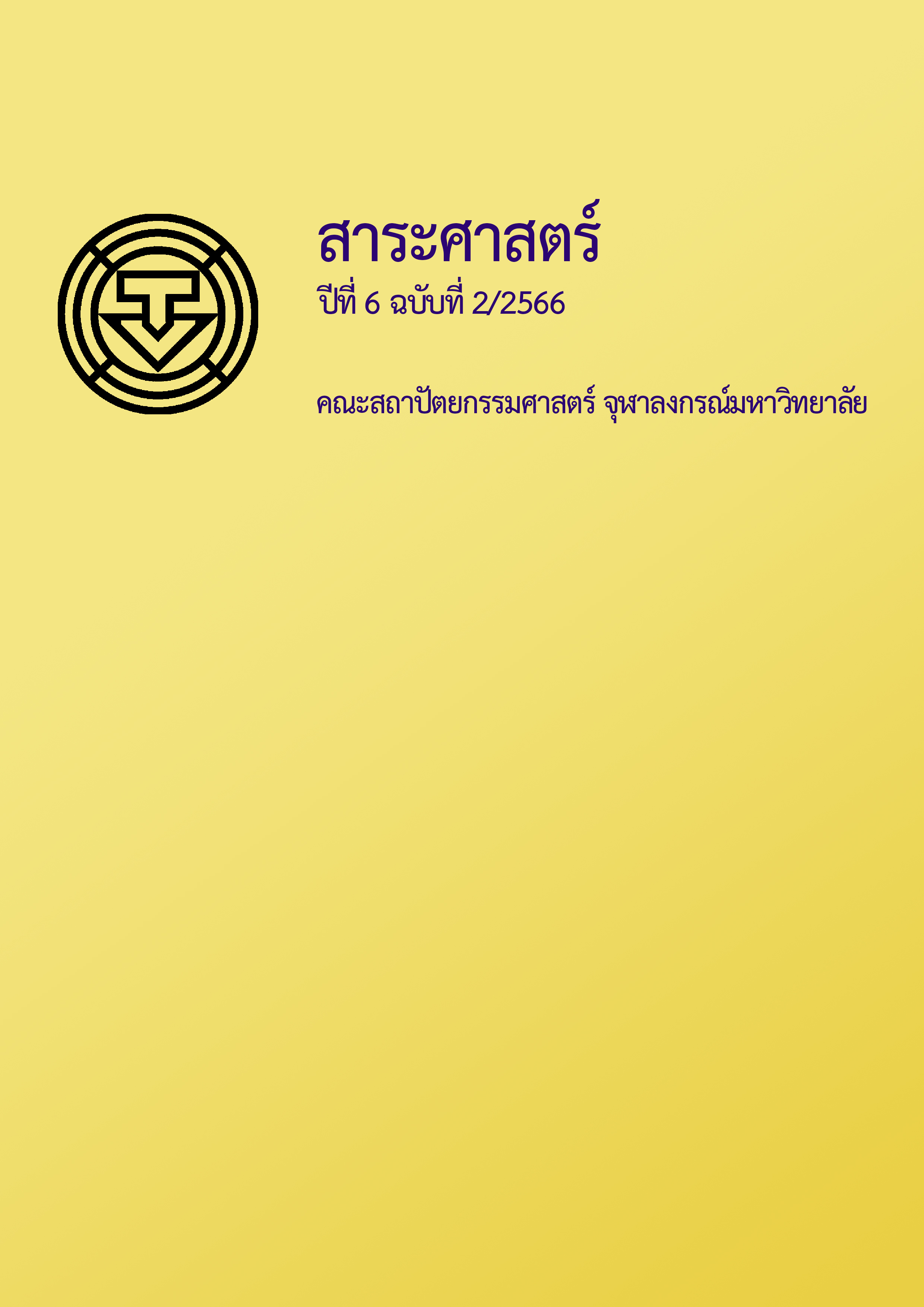Changes of Cleaning Management Methods in Commercial Office Buildings During The Covid-19 Pandemic: A Case Study of 5 Commercial Office Buildings on Wireless Road, Bangkok, Thailand
Main Article Content
Abstract
The detection of Coronavirus disease 2019 (COVID-19) was initially reported by The World Health Organization (WHO) on December 31st, 2019. Subsequently, WHO declared COVID-19 as a pandemic on March 11th, 2020. Generally, the person-to-person transmission of COVID-19 is through respiratory droplets generated by infected person during coughing or sneezing. Thus, commercial office buildings, particularly those with a large number of occupants, may pose a high risk of being a source to spread the Coronavirus. In order to mitigate the risk of COVID-19 transmission in the commercial office buildings, it is imperative to implement the effective cleaning method. This study aims to examine the changed cleaning method for commercial office buildings on the Wireless road during the COVID-19 pandemic with five case studies. All data were gathered through examine information and related literature from books, theses, and related studies. Interviews with relevant stakeholders and survey of the premises. Then, the data was organized and analyzed to identify common characteristics, concluded and discussed in details.
Based on the results of this study, it was found that a shift from standard to pandemic cleaning management methods in commercial office buildings requires an additional list and a higher frequency of cleaning methods. In addition, it entails the procurement of specialized materials and equipment, as well as additional budget management. Furthermore, it was discovered that there are two methods to manage cleaning duties during the pandemic: 1) preventing and reducing the spread of infectious agents, and 2) inhibiting the in-site transmission after the discovery of an infectious person. Additionally, this study revealed that there are three factors affecting the cleaning management methods during the COVID-19 pandemic in commercial office buildings, including: 1) tenant organization type; 2) workspace type; and 3) an infected person.
Article Details
References
กระทรวงสาธารณสุข. กรมควบคุมโรค. (2564). แนวทางการทำความสะอาดฆ่าเชื้อในสถานที่ที่ไม่ใช่สถานพยาบาลโรคติดเชื้อไวรัสโคโรนา 2019. https://ddc.moph.go.th/viralpneumonia/file/g_other/g_other290764.pdf
ฉัฐวัฒน์ ชัชณาภัฏฐ์. (2563, ตุลาคม-ธันวาคม). การจัดการองค์การในภาวะวิกฤต กรณีโรคติดเชื้อไวรัส COVID-19. วารสารวิชาการธรรมทรรศน์, 4(20), 197-207.
ณิชา วิริยานนท์. (2557). การจัดการงานรักษาความสะอาดศูนย์การค้า : ผลการศึกษา 5 กรณีศึกษาในกรุงเทพมหานคร [วิทยานิพนธ์ปริญญามหาบัณฑิต ไม่ได้ตีพิมพ์]. จุฬาลงกรณ์มหาวิทยาลัย.
ธนโชติ ฤทัยธง. (2558). การจัดการงานรักษาความสะอาด คอมมูนิตี้ มอลล์ [วิทยานิพนธ์ปริญญามหาบัณฑิต ไม่ได้ตีพิมพ์]. จุฬาลงกรณ์มหาวิทยาลัย.
พชร สุขแย้ม. (2563). การบริหารอาคารสำนักงานในช่วงสถานการณ์โรคระบาด [วิทยานิพนธ์ปริญญามหาบัณฑิต ไม่ได้ตีพิมพ์]. มหาวิทยาลัยธรรมศาสตร์.
World Health Organization Thailand. (2563). โรคโควิด 19 คืออะไร. https://www.who.int/docs/default-source/searo/thailand/update-28-covid-19-what-we-know---june2020---thai.pdf
สมาคมบริการทำความสะอาดนานาชาติ (International Janitorial Cleaning Services Association). (2554). แนวโน้มธุรกิจบริการทำความสะอาดสำหรับเอสเอ็มอีไทยปี 2554. http://www.intactpacific.com/blog/Cleaning-business-trend-2011
เสริชย์ โชติพานิช. (2553). การบริหารทรัพยากรกายภาพ: หลักการและทฤษฎี. โรงพิมพ์จุฬาลงกรณ์มหาวิทยาลัย.
World Health Organization Coronavirus disease. (2020). WHO Director-General's opening remarks at the media briefing on COVID-19 --11 March 2020. https://www.who.int/director- general/speeches/detail/who-director- general-s-opening-remarks-at-the-media-briefing-on-covid-19--11-march-2020


